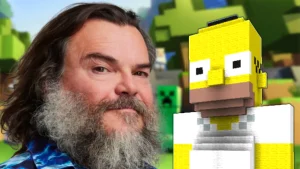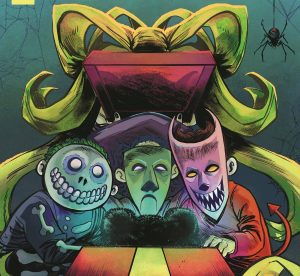Hollywood franchises are built on star power, with studios investing millions to link an actor’s face to a beloved character for years. It’s no wonder Marvel Studios paid millions to bring Robert Downey Jr. back for Avengers: Doomsday, just as the Marvel Cinematic Universe struggles to retain public attention. This makes it incredibly rare for a main actor to be dismissed from their own blockbuster series after it has already begun. That means a forced exit signals a major breakdown, a point of no return where the relationship between the star and the studio has become completely unsalvageable.
The reasons for these high-profile firings are as dramatic as the movies themselves. Sometimes the conflict is over creative differences, with actors and studios having warring visions for a character’s future. Other times, the dispute is purely financial, stemming from contentious salary negotiations that leave one party feeling disrespected. In the most severe cases, an actor’s off-screen behavior or personal scandals can force a studio to sever ties to protect the franchise’s brand. Whatever the cause, the result is a shocking shake-up that leaves a permanent mark on movie history.
For three films, the Hotel Transylvania series was an animated powerhouse with Adam Sandler as its undeniable star, voicing the lead role of Count Dracula. His departure ahead of the fourth installment, Hotel Transylvania: Transformania, was a quiet but significant blow. Voice actor Brian Hull was brought in to replace Sandler after a conflict of interest seemingly arose from Sony selling the film’s distribution rights to Amazon’s Prime Video. Sandler’s long-standing exclusive multi-picture production deal with competitor Netflix made his participation in a direct-to-Prime project untenable. As a result, the franchise’s finale moved forward without its biggest name, leading to a much more subdued streaming release that lacked the box office punch and comedic signature of its predecessors.
Few franchise dismissals have been as publicly brutal as Bruce Willis’s exit from The Expendables series. After playing the mysterious CIA contact Mr. Church in the first two installments, he was set to return for The Expendables 3. Instead, franchise creator Sylvester Stallone took to social media to announce Willis was out, later calling him “GREEDY AND LAZY” in a follow-up post. The meltdown was reportedly over Willis demanding a staggering $1 million per day for four days of work, a figure the production refused to meet. The fallout was immediate, with Harrison Ford being brought in to play a new, albeit similar character. The very public feud generated a wave of negative press for all the involved, becoming a legendary example of a negotiation gone wrong.
Hugo Weaving’s menacing turn as the Red Skull in Captain America: The First Avenger was a highlight of the MCU’s early days, so his character’s comeback in Avengers: Infinity War was a genuine shock. The bigger surprise was that Weaving was not in the role. The actor later confirmed that while he was initially open to returning, Marvel Studios offered him a salary that was significantly lower than what he had earned for the first film. When he refused, the studio simply hired actor Ross Marquand to do a vocal impersonation. It was a calculated move that proved no actor was irreplaceable in the MCU machine, setting a firm precedent that the studio’s budget and control would always trump an original performer’s return.
Victoria Sutherland was poised to become the ultimate threat in The Twilight Saga: Eclipse, with actress Rachelle Lefevre set to take center stage after playing the villain in the first two films. Just before her character’s big moment, the studio announced the decision to recast the role with Bryce Dallas Howard. Early reports claimed the firing was due to a 10-day scheduling conflict with the independent film Barney’s Version. However, Lefevre publicly stated she was “stunned,” insisting the overlap was minor and could have been easily managed. The messy, high-profile dismissal angered a significant portion of the fanbase, who felt Lefevre was treated unfairly, right as her character was about to become the main antagonist.
Crispin Glover’s wonderfully eccentric performance as George McFly is a cornerstone of Back to the Future. His absence from the sequel, Back to the Future Part II, however, led to one of the most infamous recasting scandals in film history. After Glover was pushed out over a dispute where the studio refused to pay him a salary comparable to his returning co-stars, the producers hired another actor, Jeffrey Weissman, and fitted him with facial prosthetics molded from Glover’s face to mimic his appearance. This bizarre move backfired spectacularly, leading to a landmark lawsuit. Glover sued the production for using his likeness without permission and won, a victory that prompted new rules in Hollywood to protect actors from having their images replicated without consent.
For a quarter of a century, Neve Campbell was the Scream franchise. Her portrayal of Sidney Prescott is legendary, making her the ultimate final girl. That is why her announcement that she would not be returning for Scream VI sent shockwaves through the horror community. The reason was a salary dispute. Campbell stated that the studio’s offer “did not equate to the value I have brought to the franchise,” forcing her to walk away from her most iconic role. This decision forced the series to prove it could stand on its own without its original hero, shifting the entire narrative focus to its younger cast. Campbell’s departure also ignited a fierce industry debate about pay equity and respect for women in horror. Fortunately, things seem to have been settled since then, as Campbell is returning for Scream 7.
The first two Transformers films launched Megan Fox into global stardom, making her character, Mikaela Banes, a household name. Still, her tenure with the franchise imploded just before production on Transformers: Dark of the Moon. Fox was fired after giving an infamous interview where she compared director Michael Bay’s demanding on-set behavior to Hitler’s. The comment reportedly infuriated executive producer Steven Spielberg, who demanded her immediate termination. The fallout was swift and brutal, as Fox’s character was unceremoniously written out of the script and replaced with a new love interest played by Rosie Huntington-Whiteley. The firing served as a cautionary tale about the consequences of speaking out against a franchise’s powerful creators.
Edward Norton’s turn as Bruce Banner in The Incredible Hulk was meant to establish the character for a new cinematic universe, but his creative clashes with Marvel Studios became legendary. Norton, a known perfectionist, famously delivered his own edit of the film in an attempt to make it darker, which conflicted with the studio’s desire for a more action-focused blockbuster. When it was time to assemble the team for The Avengers, Marvel announced that Mark Ruffalo would be taking over. To make matters worse, the studio released a public statement citing its need for an actor who embodied the “collaborative spirit” of the other cast members. The recasting established Marvel’s zero-tolerance policy for creative friction, proving that the shared universe’s integrity was more important than any single star.
As the central antagonist Gellert Grindelwald, Johnny Depp was positioned as the menacing face of the entire Fantastic Beasts franchise. His tenure came to a halt ahead of the third film, Fantastic Beasts: The Secrets of Dumbledore, when Warner Bros. asked him to resign. The decision was a direct response to Depp losing his libel case against the British newspaper The Sun, which had labeled him a “wife beater.” The UK court found the claims of domestic abuse against his ex-wife, Amber Heard, to be “substantially true,” creating a public relations nightmare. To protect the family-oriented Harry Potter brand, the studio severed ties with its A-list villain. The recasting of a franchise’s main antagonist mid-series, with Mads Mikkelsen stepping in, created a jarring disruption that contributed to the sequel’s critical and commercial failure.
Jonathan Majors was positioned as the heir to Thanos, the foundational villain for the entire “Multiverse Saga” of the Marvel Cinematic Universe. Cast as Kang the Conqueror, he was introduced in Loki and set up as the central antagonist in Ant-Man and the Wasp: Quantumania. Nevertheless, Marvel Studios terminated his contract within hours of him being found guilty of reckless assault and harassment in a domestic violence case involving a former partner. In addition, Marvel completely scrapped its multi-year plan, with a film once titled Avengers: The Kang Dynasty being officially renamed Avengers: Doomsday, and the entire Kang storyline abandoned.
In the most shocking twist, Marvel Studios revealed that Robert Downey Jr. is returning to the MCU as the new primary villain, Doctor Doom. To steer this new saga, the studio has also brought back Joe and Anthony Russo, the acclaimed directors who helmed the saga-defining blockbusters Avengers: Infinity War and Avengers: Endgame. As such, the firing of Majors didn’t just remove an actor but also forced the world’s biggest franchise to publicly dismantle its future and rebuild it from the ground up.
Which other movie star’s franchise firing do you think was the most shocking? Leave a comment below and join the conversation now in the ComicBook Forum!
The post 10 Movie Stars Sacked From Their Own Franchises appeared first on ComicBook.com.




